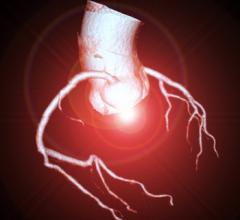
November 6, 2020 — The Society of Cardiovascular Computed Tomography (SCCT) has released a new training guideline, Training Cardiology and Radiology Trainees as Independent Practitioners (Level II) and Advanced Practitioners (Level III) in Cardiovascular Computed Tomography (CCT).
This document, which is published in the Journal of Cardiovascular Computed Tomography and co-published in Radiology: Cardiothoracic Imaging and JACC: Cardiovascular Imaging, provides guidance for program directors charged with designing a curriculum for the training of newly defined independent practitioners (Level II) and/or advanced practitioners (Level III). The guideline articulates a training experience with a novel pathway for a uniform level of competence for both cardiology and radiology trainees. It delineates new curriculum milestones as well as thresholds for technical understanding and overall case volumes in coronary imaging, structural heart disease and congenital heart disease to achieve independent and advanced competency.
According to Andrew Choi, M.D., FSCCT, co-chair and lead author of the guideline: “The rapid growth and established benefit of a CCT approach in multiple clinical domains require programs to adopt a comprehensive training curriculum to meet the growing need for well-trained independent and advanced practitioners in both cardiology and radiology. This guideline allows cardiovascular medicine to expand high quality CCT in the United States and around the world.”
A curriculum based solely on case volume is insufficient to bridge the substantial knowledge gap, particularly among independent practitioner graduates given the diversity of training backgrounds, local volume, and supervisor expertise, and so the recommended case volumes serve as a minimum floor to assess competency. The core elements of this document are expected to remain foundational for independent practitioner and advanced practitioner competency, while future updates to this training curriculum may be issued through both traditional and emerging digital publication formats.
“I anticipate the need for training of new cardiac CT experts to continue and increase substantially in the coming decade,” said former SCCT president Suhny Abbara, M.D., FACR, MSCCT, chief of cardiothoracic imaging and director of the cardiothoracic imaging fellowship program at the University of Texas Southwestern Medical Center, “as the tremendous proven value that this modality provides to our patients is more and more recognized. It therefore is more important than ever before to define and standardize the training requirements for users, basic and advanced practitioners of cardiac CT, independent of whether they are radiologists or cardiologists. This is exactly what this guideline addresses.”
The new guideline builds on the 2015 SCCT Level I Curriculum Guideline, and encourages adoption of the updated training curriculum recommendations as a supplement to the current societal statements that include American College of Radiology (ACR), American College of Cardiology COCATS 4 and other global training documents. This guideline is not meant to supersede the existing COCATS and ACR statements, but rather complement those documents to encompass the most recent advancements in the field of CCT.
Reference:


 December 11, 2025
December 11, 2025 









